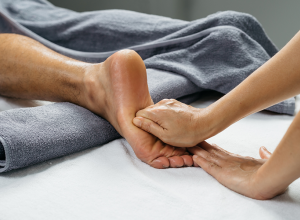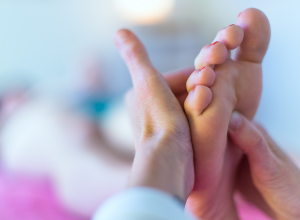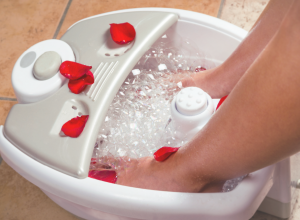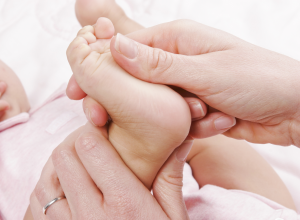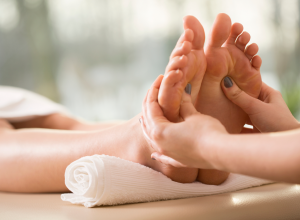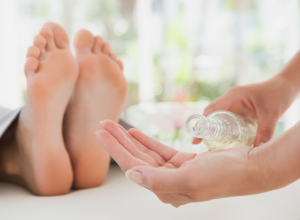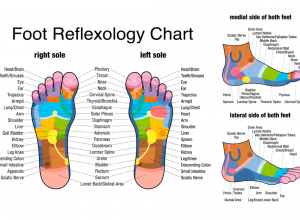
Reflexology
Reflexology is an alternative medicine therapy session that uses many different techniques to apply appropriate pressure and rubbing to specific points of the body, usually on the hands, feet and ears.
As in acupressure and acupuncture, the basis of reflexology rests on the fact that relieving blockages of the body's energy (called qi or chi) can have a healing effect. Reflexologists believe certain points on the hands, feet and ears correspond to other organs and body systems, and that appropriate pressure and rubbing of these points can have a therapeutic effect on body organs and overall health. For example, pressing a specific point on the foot may affect the functioning of an intestinal organ.
The practice of reflexology is said to have originated over 5,000 years ago and was initially used in China, Egypt and India. Today, it is used a form of complimentary medicine in addition to traditional treatments for diseases and conditions like asthma, cancer, cardiovascular issues, diabetes, kidney function and headaches.
Reflexology is practiced all over the world, which may be why there is no central agreement on where specific reflexology points are located. However, most reflexologists divide the body into 10 vertical zones, five on each side of the body, and manipulate the flow of qi that passes through each. This division was first written about in the Unites States in 1917 by William H. Fitzgerald, MD, who is often called the father of reflexology. Dr. Shelby Riley later expanded on Fitzgerald's work and developed a map of horizontal reflexology zones on the body.
Though the practice of reflexology has gained in popularity over the last couple of decades, a 2009 systematic review by Ernst, E, found that there is not enough evidence to prove that reflexology is an effective treatment method for medical conditions.
Notice concerning medical entries:
Articles having medical content shall serve exclusively for the purpose of general information. Such articles are not suitable for any (self-) diagnosis and treatment of individual illnesses and medical indications. In particular, they cannot substitute for the examination, advice, or treatment by a licensed physician or pharmacist. No replies to any individual questions shall be effected through the articles.

